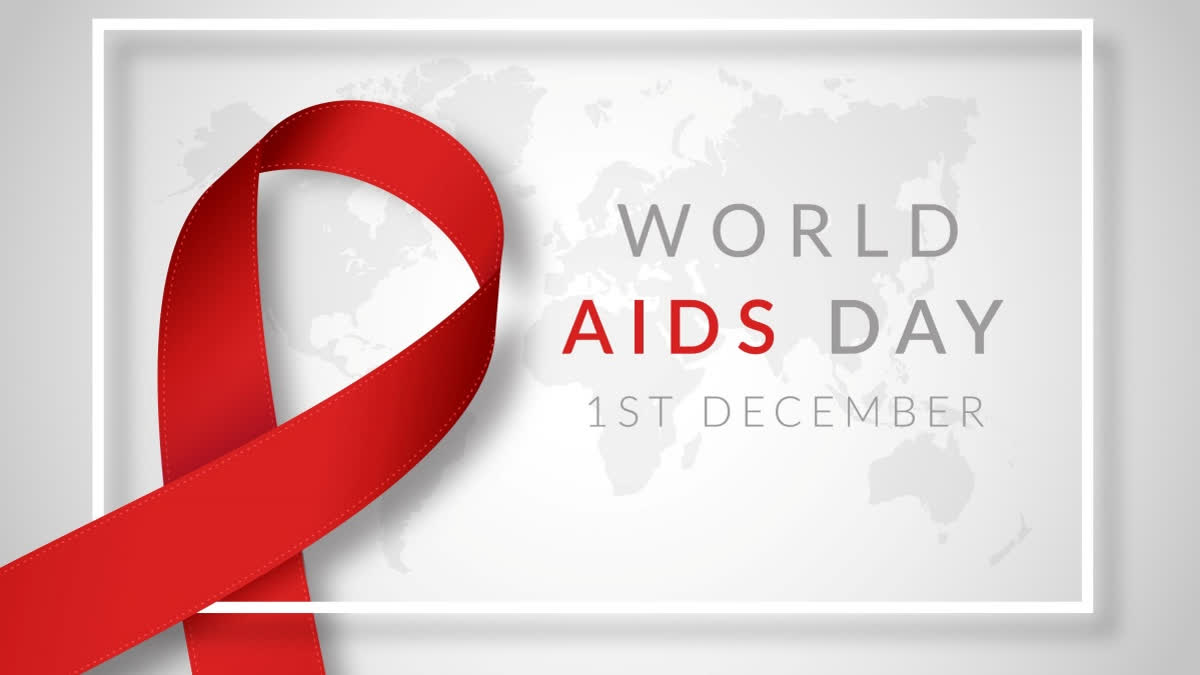As we observe World AIDS Day on December 1, it’s essential to reflect on how misinformation fuels stigma and creates barriers for individuals living with HIV/AIDS. Myths about the disease not only perpetuate discrimination but also discourage people from seeking testing, treatment, and support.
The ETV Bharat Health team asked a panel of medical experts to debunk the most common misconceptions about HIV/AIDS and replace them with accurate, science-backed information.
Myth 1: HIV Spreads Through Casual Contact Like Hugging Or Sharing Utensils
Fact: “HIV cannot be transmitted through touching, hugging, or sharing utensils with an HIV-positive person,” explains Dr. Lipika Parulekar, General Physician at Lilavati Hospital. The virus spreads only through specific bodily fluids like blood, semen, vaginal fluids and breast milk. It cannot survive outside the human body for long, making casual contact completely safe.
Says Dr. Raman Gaikwad, Infectious Diseases Physician, Sahyadri Super Speciality Hospitals, Deccan Gymkhana in Pune: “Misconceptions like this contribute to the social isolation of HIV-positive individuals. Accurate education is crucial to combating such stigma.”
Myth 2: HIV Can Be Contracted Through Mosquito Bites
Fact: HIV cannot be transmitted through mosquito bites or any other insect. “The virus cannot survive or replicate inside mosquitoes, and their bites do not involve the exchange of blood,” explains Dr. Ram Murti Sharma, Medical Superintendent at Sharda Hospital. This persistent myth has no scientific basis and should be dispelled.
Myth 3: HIV Only Affects Certain Groups, Like Queer Individuals Or Drug Users
Fact: HIV is not limited to any specific demographic. “The virus can infect anyone, regardless of sexual orientation, lifestyle or socioeconomic background,” says Dr. Gaikwad. “Every individual has the responsibility to educate themselves about transmission to reduce risks, irrespective of their community or identity.”
This myth not only perpetuates harmful stereotypes but also neglects the reality that HIV transmission can occur in diverse contexts, including unprotected heterosexual intercourse, sharing needles, or mother-to-child transmission.
Myth 4: Condoms Are Ineffective Against HIV
Fact: Condoms are highly effective when used correctly. “Studies show that consistent and proper condom use can reduce the risk of HIV transmission by as much as 85%,” states Dr. Gaikwad. However, improper use diminishes their effectiveness. Educating individuals on the correct usage of condoms is vital for HIV prevention.
Myth 5: HIV Can Be Cured With Traditional Medicine Or Home Remedies
Fact: “There is no cure for HIV/AIDS, and traditional remedies or home treatments can delay necessary care and worsen the condition,” warns Dr. Parulekar. Modern medicine offers antiretroviral therapy (ART), which helps manage the virus, improve immunity and enhance quality of life. ART is essential for controlling the virus and preventing its progression to AIDS.
Myth 6: You Can Identify Someone With HIV By Their Appearance
Fact: Many people with HIV show no symptoms for years. “It is a dangerous misconception that you can tell if someone has HIV just by looking at them,” notes Dr. Sharma. This belief fuels stigma and discourages people from getting tested. Regular testing is the only way to determine one’s HIV status.
Myth 7: HIV Can Be Transmitted Through Kissing Or Shared Food
Fact: Saliva contains insufficient quantities of the virus to cause transmission. “HIV cannot be spread through kissing unless both individuals have large open sores in their mouths, which is extremely rare,” clarifies Dr. Sharma. Similarly, the virus cannot survive in food or beverages handled by an infected individual.
Myth 8: Stopping HIV Treatment After Feeling Better Is Safe
Fact: “HIV requires lifelong management with antiretroviral therapy (ART). Stopping treatment can lead to viral resurgence and increased health risks,” warns Dr. Sharma. Adherence to ART is essential to maintain health, achieve viral suppression, and prevent transmission.
Myth 9: Birth Control Pills Protect Against HIV
Fact: “Contraceptives like birth control pills prevent pregnancy but do not protect against HIV,” explains Dr. Sharma. Only barrier methods like condoms can reduce the risk of HIV transmission during sexual activity.
Myth 10: HIV/AIDS Is a Death Sentence
Fact: Advances in medical science have transformed HIV into a manageable chronic condition. “With antiretroviral therapy, people with HIV can live long, healthy lives and achieve viral suppression, significantly reducing the risk of transmission,” says Dr. Sharma. This underscores the importance of early diagnosis and consistent treatment.
Knowledge is our most powerful tool in erasing stigma and ensuring that those living with HIV receive the respect, care and support they deserve. Misinformation about HIV/AIDS fuels stigma, discrimination, and fear, preventing individuals from seeking the testing and treatment they need. As Dr. Gaikwad say, “By spreading accurate information, we can integrate and support those living with HIV in our communities more effectively.”
Read more:



